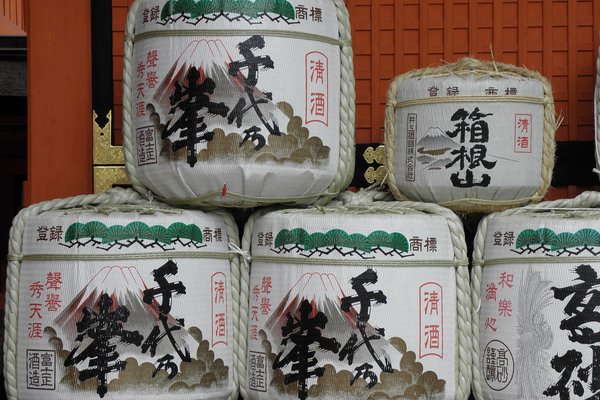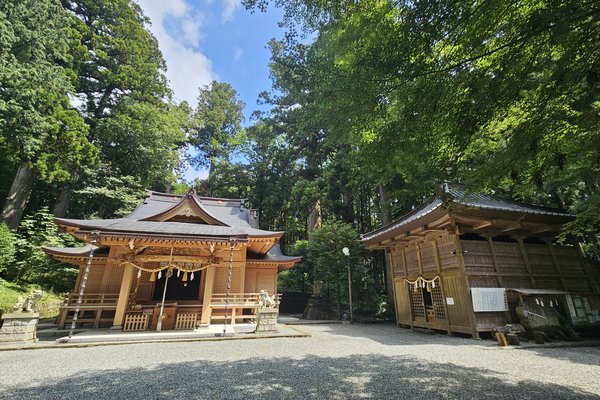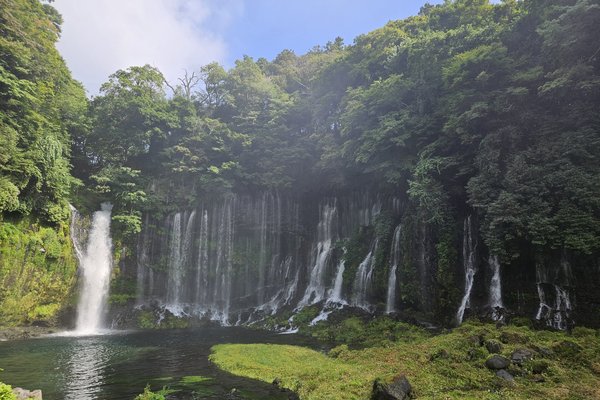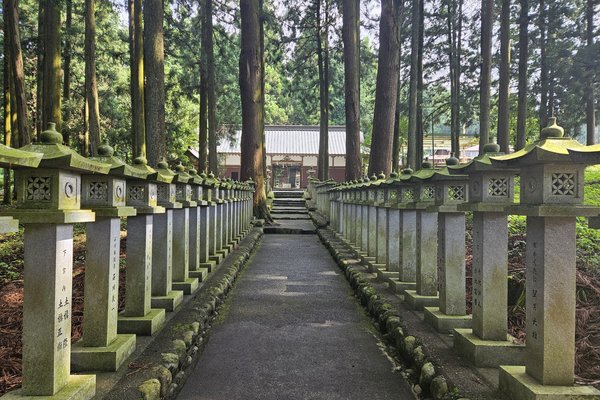Japan
Fujisan
Fujisan is a majestic stratovolcano that is revered as sacred and inspirational in the Shinto belief.
Pilgrims have climbed this often snow-capped volcano since ancient times to worship the mountain. At the foot of the mountain, Buddhist temples, Shinto shrines and lodging houses were built. Mt. Fuji has also been an inspiration for artists and these interpretations have made the mountain gain fame globally.
Community Perspective: This site has 25 components, so the reviews are scattered around between them, with only 2 people having climbed it. Among the lower areas, the Fuji Five Lakes region (Frederik, Hubert) is a good choice, as well as Fujinomiya (Els, Nan). Both Tsunami and Nan also describe festivals.
Site Info
Official Information
- Full Name
- Fujisan, sacred place and source of artistic inspiration (ID: 1418)
- Country
- Japan
- Status
-
Inscribed 2013
Site history
History of Fujisan
- 2013: Name change
- At inscription, "..., sacred place and source of artistic inspiration" added
- 2013: Inscribed
- Inscribed
- Type
- Cultural
- Criteria
- iii
- vi
Links
- UNESCO
- whc.unesco.org
- Official
-
- pref.shizuoka.jp — Shizuoka prefecture
- yamanashi-kankou.jp — Yamanashi - Home of Mt. Fuji
- Related
-
- fujisan-3776.jp — Nomination website
- fuji-hongu.or.jp — Hongu Sengen Taisha Shrine
All Links
UNESCO.org
- whc.unesco.org — whc.unesco.org/
Official Website
- pref.shizuoka.jp — Shizuoka prefecture
- yamanashi-kankou.jp — Yamanashi - Home of Mt. Fuji
Related Resources
- fujisan-3776.jp — Nomination website
- fuji-hongu.or.jp — Hongu Sengen Taisha Shrine
News Article
- March 8, 2024 amp.cnn.com — Mount Fuji introducing visitor cap and entry fee to target overcrowding issues
- Nov. 28, 2015 ajw.asahi.com — Number of climbers allowed on Mount Fuji may be scaled back starting in 2018
- July 28, 2014 the-japan-news.com — Recount set for Miho no Matsubara pine forest
- July 26, 2014 japantimes.co.jp — Narita Express launches direct runs to Mount Fuji
- June 24, 2014 the-japan-news.com — Mt. Fuji World Heritage listing has mixed results 1 year on
- March 19, 2014 designboom.com — Shigeru Ban to complete mount fuji world heritage center
- July 25, 2013 globalpost.com — Climbers to Mt. Fuji required to pay 1,000 yen admission fee
- July 11, 2013 ajw.asahi.com — Monk captures iconic 'Diamond Fuji' image
- June 9, 2013 japantoday.com — Fuji climbing fee likely to be Y7,000
- May 1, 2013 japantoday.com — Fuji to get World Heritage Site status
- April 5, 2013 japantimes.co.jp — Hikers may be kept off Fuji except in summer
- Oct. 1, 2012 yomiuri.co.jp — Mt. Fuji, Kamakura cultural listing seen slim
- Aug. 2, 2011 mdn.mainichi.jp — Japan seeks the registration of Mt. Fuji as a World Heritage site in 2013
- Jan. 24, 2009 mdn.mainichi.jp — Plans to submit Mount Fuji to the World Heritage list in 2011 are likely to be postponed for more than a year
Community Information
- Community Category
- Religious structure: Indigenous
Travel Information
Not for Acrophobes
Tokyo Hotspot
Recent Connections
-
Georgia O'Keeffe
Georgia O'Keeffe painted two versions o…
-
Reportedly haunted locations
Aokigahara, the forest at the bottom of…
-
Location for a classic movie
Throne of Blood (1957)See en.wikipedia.…
Connections of Fujisan
- Individual People
-
-
Georgia O'Keeffe
Georgia O'Keeffe painted two versions of Mount Fuji after her visit in the 1950s (link)
-
Elias Burton Holmes
See www.amazon.com
-
- Geography
-
-
World's Highest Topographically isolated summits
28th, 2076.66 km -
Highest cultural WHS
3,776.24 m (wiki) -
Pacific Ocean
Mihonomatsubara pine tree grove -
Pacific Ring of Fire
-
World's most prominent mountains
35th -
Territorial Highest points
the highest mountain in Japan at 3,776.24 m (wiki) -
Volcanic Cone
-
- Trivia
-
-
Depicted in emoji
Mount Fuji emojiSee emojipedia.org
-
Cultural sites closely connected to volcanoes
Fujisan is a solitary strato-volcano (OUV statement) -
On Passports
Japan's new passport - to be released in 2020 - will have artists impressions of the 36 views of Mt. Fuji.See soranews24.com
-
Reportedly haunted locations
Aokigahara, the forest at the bottom of Mt. Fuji, is a popular location for suicide. This gives rise to a widespread belief that it is haunted.
-
Tourist Treks
Climb it: mostly done on an overnight hikeSee wikitravel.org
-
On Banknotes
on 1000 Yen Banknote - Series E (from November 1, 2004) on 5000 Yen Banknote - Series D (November 1, 1984-April 2, 2007) on 500 Yen Banknote - Series B (April 2, 1951-January 4, 1971) on 50 Sen Banknote - Fuji Sakura (June 1, 1938-August 31, 1948) -
Buildable in Lego
As part of the Tokyo Skyline setSee www.lego.com
-
Google Doodles
June 23, 2013, Mt. Fuji becomes a World Heritage siteSee www.google.com
-
Replica in Legoland
Legoland Japan -
Fatal Accidents or 'disasters'
7 deaths among climbers in 2012
-
- Ecology
-
-
Notable Trees
1000 years old cypress of Kitaguchi Hongu Fuji Sangen Jinja -
Stratovolcanoes
-
- Architecture
-
-
Wooden architecture
Fujisan' shrines -
Gold Surfaces
Outer wall of Honden in Kitaguchi Hongu Fuji Sangen Jinja is covered in gold
-
- World Heritage Process
-
-
Perfect Inscriptions
2013 -
Cultural landscape not recognized
Described in AB as "to be managed as a CL". If so would be "Assoc"? -
WHS with enclave
The village of Motosu next to Lake Motosu is excluded and fully surrounded by the inscribed area. No explanation is given in the Nomination documentation, nor is any comment made by the ABSee whc.unesco.org
-
- Religion and Belief
-
-
Axis Mundi
Japan's highest mountain, Mount Fuji, has long symbolized the world axis in Japanese culture (wiki) -
Legends and Folk Myths
Aokigahara Forest of Demon -
Multiple Religions
Shinto & Buddhism: "ICOMOS considers that what is significant is the awe that Fujisan's majestic form inspired and the way that this was transformed into religious practices that linked Shintoism and Buddhism, people and nature, and symbolic death and re-birth" -
Sacred Mountains
-
Shinto
All its 7 shrines -
Pilgrimage route
Yoshida Ascending Route (see red line at link)See whc.unesco.org
-
- Human Activity
-
-
Thanatourist destination
Aokigahara Forest: history of suicides and the place has long been associated with death (wiki)See en.wikipedia.org
-
Gilded Lacquer or Urushi
Honden Hall of Kitaguchi Hongu Fuji Sangen Jinja
-
- Constructions
-
-
Theatres and Opera Houses
Noh Stage at Kitaguchi Hingu Fuji Sangen Jinja -
Horse Stables
Kitaguchi Hongu Fuji Sangen Jinja has a sacred horse stable.
-
- WHS on Other Lists
-
-
Sri Chinmoy Peace-Blossoms programme
Sri Chinmoy Peace Mountains and Summit: Summit of Mt. Fuji (27 Jan 97), Japan
-
- Timeline
-
-
Built in the 11th century
by the 11th century, the form of Fujisan came to inspire literature and art - notably on painted paper screens (AB ev)
-
- WHS Hotspots
-
-
Tokyo Hotspot
2h to Kawaguchiko station, and then hike or bike
-
- Visiting conditions
-
-
Not for Acrophobes
Although 200,000 people climb Fujisan yearly and the hike is considered to be easy to moderate in difficulty, the descent through long ash paths can be scary.
-
- WHS Names
-
-
Name changes
At time of inscription, "..Amplifying the name of the property to allow it to reflect its sacred and artistic associations." -
Named after a Mountain
"Fujisan is a solitary strato-volcano, around 100 km south-west of Tokyo that rises to 3,776 meters in height." (OUV)
-
- Literature & Film
-
-
Featured in the Go Jetters
Series 2: Episode 14: Bullet train -
In The Simpsons
“Thirty Minutes Over Tokyo” (1999) -
Location for a classic movie
Throne of Blood (1957)See en.wikipedia.org
-
News
- amp.cnn.com 03/08/2024
- Mount Fuji introducing visitor cap…
- ajw.asahi.com 11/28/2015
- Number of climbers allowed on Moun…
- the-japan-news.com 07/28/2014
- Recount set for Miho no Matsubara …
Recent Visitors
Visitors of Fujisan
- AC
- Adam Hancock
- Afshin Iranpour
- aj
- Alexander Barabanov
- Alexander Lehmann
- Alexander Parsons
- Alex Baranda
- Alex Goh
- Alex Marcean
- AlexSchedel
- alicemears
- Alikander99
- Ammon Watkins
- Ana Lozano
- Andrea Szabo
- Anna Wludarska
- Ansitong
- anthonybonbon
- Aspasia
- Astraftis
- Atila Ege
- Badwater
- Bamse
- Bauchat
- BaziFettehenne
- BenReeve
- Bill Koo
- Bill Maurmann
- bogbb
- Bram de Bruin
- Can SARICA
- Carlo Sarion
- Casey
- Caspar
- CeeMon
- Celina Nanbara
- chenboada
- chenqtao
- Cheryl
- chiuliqi
- Chole Ross
- Christoph
- Claire Bradshaw
- Clyde
- Colossus
- Corinne Vail
- CugelVance
- cutecid
- cwthong
- Cyberczar
- CynthiaW
- Daniel Chazad
- Deffra
- delacec
- Dimitar Krastev
- DouglasR
- DutchHorn
- Elaine McArdle
- Elena Y
- Elisabeth Fransisca Situmorang
- eljx1988
- Els Slots
- Errol Neo
- Eva Kisgyorgy
- Fan Yibo
- flahr
- Folkokovic
- Frédéric M
- Frederik Dawson
- FS
- Gabbro
- Garrett
- George Gdanski
- GeorgeIng61
- GerhardM
- Gernot
- HaraldOest
- Harald T.
- H Beswick
- Hdwilsonau
- henrik_hannfors
- henryjiao18
- Hubert
- Hunstow
- Hurrvinek
- Iain Jackson
- Jaakkotoivanen
- Jasam
- Jason Boulette
- jballard650
- Jeanne OGrady
- Jeffrey Chai
- Jennjenn
- jess4sythe
- JL
- João Aender
- Joel on the Road
- Jonas Kremer
- Jon Bauer
- Jon Opol
- JoStof
- Joyce van Soest
- KarenBMoore
- Kasia M.
- Kasper
- KeithBailey
- Ken DJ
- Kevin Padley-Knight
- ko9757
- Kurt Lauer
- Leonie Geurts
- Li
- Loic Pedras
- Luboang
- Lukasz Palczewski
- Luke LOU
- lynnz317@aol.com
- Maciej Gil
- Malgorzata Kopczynska
- Manon R
- Marinemajor
- Martin
- Matthewsharris
- MaYumin
- MC
- M.HATADA
- Mia esguerra
- MichaelH
- Michael Novins
- Michael Turtle
- Miguel Marquez
- Mihai Dascalu
- Mikan22
- Miloš Tašković
- Momac96
- Monica Tasciotti
- Morodhi
- Nafis N
- Naim Y
- nan
- Neil McPaul
- Nihal Ege
- nikosar
- NoahFranc
- Nuria8
- _oscar
- Pat Martin
- Patrik
- Paul Schofield
- Pchxiao
- PeterA
- Peter Lööv
- Philipp Leu
- Philipp Peterer
- phillipmeng
- Pieter Dijkshoorn
- Pincze
- Porcho
- Priyaranjan Mohapatra
- Randi Thomsen
- ReallyDeepThoughts
- Reisedachs
- Rob Wilson
- Roger Ourset
- Rubbie
- RyanJ
- Sclowitz
- scubarrie
- Sergio Arjona
- Shandos Cleaver
- Slavi
- Solivagant
- Spike Zou
- Ssong.x
- Stanislaw Warwas
- SteveD92
- Stijn
- Svein Elias
- SymonMajewski
- Szucs Tamas
- Tamara Ratz
- Taotao Chen
- Tcchang0825
- Ted Coombs
- thisispivi
- Thomas Buechler
- Thorben
- Tinamu
- tingmelvin
- travellingcat
- triath
- Truls Brekke
- Tsunami
- Valentina
- Vanessa Buechler
- Vernon Prieto
- Vincent Cheung
- Waxwing
- Westwards
- Wojciech Fedoruk
- wrung24
- Xiong Wei
- Xiquinho Silva
- Yongcheng Liu
- Zach
- Zizmondka
- zman5455
- Zoë Sheng
- Zos M
Community Reviews
Show full reviews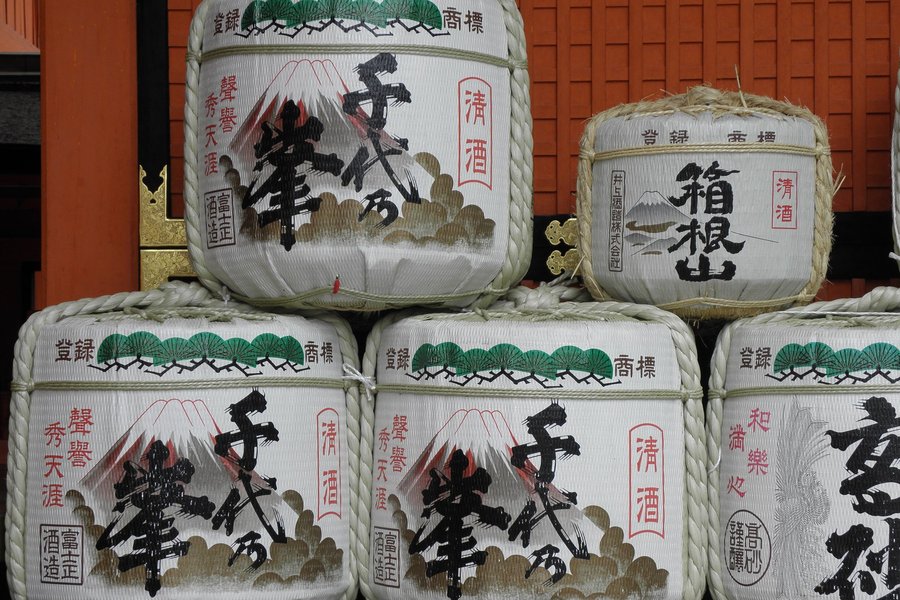
I climbed Fujisan back in 2014, and it was the absolute highlight of my Tokyo stay.
I came vastly unprepared and didn't find the hike that difficult, although it should be noted that we had some perfect weather that day. We climbed from the 5th until the 8th station, where we had dinner and a quick sleep.
In the middle of the night, we woke up and climbed the rest until the summit. That's actually one of my fondest travel memories ever, seeing the Tokyo city lights in the distance and the stars above, almost becoming one, and the silent procession moving upwards. It was mystical, magical.
The much-awaited sunrise at the top was also nice, although it was freezing up there. The descent through long ash paths was easier, but I did take my time due to a bit of vertigo.
Keep reading 0 comments
The classic way to visit the Fujisan WHS would be to hike up to the summit at 3770 m. But for normal hikers, this is only possible in July and August, when the mountain huts are open and reservations are accepted. Many hikers stay overnight in a hut and climb the summit in the early morning to see the sunrise. This is considered a very special spiritual experience. However, the trails can be very crowded. Despite the very short season, around 300.000 visitors climb Mount Fuji every year. If you visit Mount Fuji in summer, be aware that the summit is snow-free and this was still the case when I visited in September. It is a surprising and unusual view, you will rarely find photos of the snow-free Fujisan in the Web.
I visited Japan in late September / early October 2019, so hiking to the summit was not an option. But at least I wanted to enter the major core zone, the Fujisan Moutain Area, and visit one of the main temples at the foot of Mount Fuji. Thus, I chose the Fuji Five Lakes region and spent two days in Fujikawaguchiko on the shore of Lake Kawaguchi. Kawaguchiko is the starting point for climbing Mount Fuji on the Yoshida trail, but also a popular recreation area for Tokyo. Several bus lines connect the main sights of the region. But the weather was fine (the Fuji summit was cloudless most of the time) and so I decided to …
Keep reading 0 comments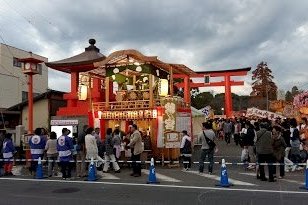
One of the fondest memories of my trip to Japan was pulling a float and having sake in Fujinomiya. This was not planned, as I rarely, if ever, check event calendars. My itinerary is set by logistics. Local events are only relevant if they significantly impact hotel prices.
I had arrived in Fujinomiya from Nara in the evening and planned to stay two days. The evening was quiet, but I did already notice plenty of huts covering the greater parts of the inner town; especially the area around the inscribed Sengen Taisha Shrine. The next morning I went to Niriyama. When I came back around lunch time, the town was in partying mood. There were floats on the streets and plenty of people visiting the temples to pray. It was the Fujinomiya Fall Festival (3-5 Nov).
For the afternoon, I was out of town with a sightseeing bus to see more of Fuji. For a classic photo, go to Lake Tanuki. The Shiraito Waterfalls were impressive as a natural site. We visited a smaller shrine and it's important to point out that Fuji is a cultural inscription. It's the religious sites build around Fuji that make the OUV, not the volcano itself.
When I came back to town the festivities kept ongoing. Eventually, I went back to my hotel and was about to call it night. Little did I know... I could not sleep as there was huge drum noise coming from the street. I got back …
Keep reading 0 comments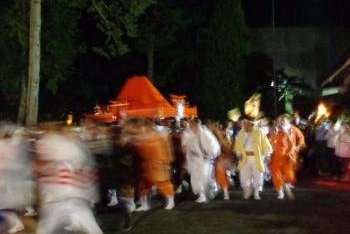
Having been born in Japan and visited Japan numerous times even after moving to the US, I just counted 6 as the number of times I have made trips centered around Fujisan. This is on top of the fact that Fujisan can be seen on clear days from my condo in Yokohama.
By making the trips I have visited only 5 out of 25 components of this serial property: Miho no Matsubara, which I visited when I was a pre-teen, Fujisan Mountain Area, where I made the ascent to the top in 1984, Kawaguchi-Ko in 2011, Yamanaka-Ko and an Oshi Lodging House, which I visited on the day of the Fujiyoshida Fire Festival at Kitaguchi Hongu Fuji Sengen Jinja, only a few months after the inscription in 2013.
Is Kitaguchi Hongu Fuji Sengen Jinja (Jinja means Shinto shrine) in Fujiyohsida a part of this property? If you look at this page
http://whc.unesco.org/en/list/1418/multiple=1&unique_number=1883
it is not listed, even though 7 other Sengen Shinto shrines are listed here. Nor is it indicated in our map above.
It is confusing, but as it turned out, Kitaguchi Hongu Fuji Sengen Jinja is included in the “Fujisan Mountain Area,” the core of the core zone, listed on top of the list on the page above. This means that if you visit this Shinto shrine, you visited the “Fujisan Mountain Area.”
Indeed, all in all 9 Sengen Shinto shrines are included in the property, not just 7, the last one being the Hitoana Sengen Jinja, which …
Keep reading 0 comments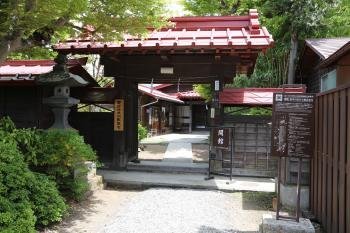
I visited Togawa Oshi Piligrim's Inn and Kitaguchi Hongu Fuji Sengen-jinja Shrine, both within 20-minute walking distance from Fujisan railway station.
Togawa Oshi House was built in 1768 to host numerous piligrims to the Mount Fuji. In the begining of the nineteenth century there were 86 similar inns in the area, now only 12-13 remaining. The House has extensive audio guide descibing each corner of the house and providing general information.
The Shrine dating back to the 8th century was the last spiritual stop for the piligrims ascending to the summit from the north side. It is located in lovely forest setting (with some sacred cedars which are over 1000 years old), with beautiful garden, painted main hall, big torii gate, and portable shrines used in fire festivals.
Keep reading 0 comments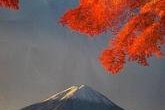
I visited this WHS in November 2009. It is visible from Tokyo on clear days as well as from the Shinkansen. I visited the nearby Shinto shrines and temples, the Fuji Five Lakes and the Hakone viewpoint. I'm really happy for Japan that Fujisan was inscribed in the list - truly world class!
Keep reading 0 comments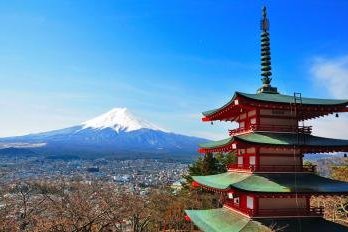
Less than a month after Fujisan has officially been listed as World Heritage Site, my friend in Shizuoka invited me to visit Japan, after reading its nomination document and found out a lot of interesting information on its cultural components, I decided to visit Fujisan again to see this beauty in the new perspective. I started my trip at Shizuoka, in the city of Shimizu, where the controversial Miho no Matsubara is located. The place is the large pine forest in the sand peninsular with the view of Fujisan. I really enjoyed the pine forest, and the view of Fujisan was quite stunning; however, the view was not exactly similar with the work of Hiroshige and there are many better viewpoints to see Fujisan especially from Izu areas, also the beach was grayish and not lovely at all, so I was not impressed with the place.
The view of Fujisan from Yamanaka Lake, one of the Fuji Five Lakes was again lovely from the lakeshore, and then I continued to the village of Oshino Hakkai, I never heard the name of this place before until I read the nomination paper. The village was very touristy with many souvenir shops and restaurants selling soba noodles. The reasons to visit this village are the springs, there are eight turquoise color springs in the village, and all are crystal clear and very photogenic. The village also has many traditional houses around the springs so a very beautiful place indeed. I …
Keep reading 0 comments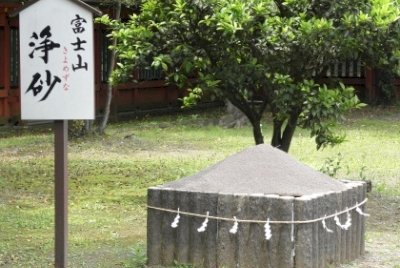
In anticipation of the 2013 nomination of Mount Fuji, I had been looking for an “easy way” to see this site without having to climb the mountain itself. From the limited information available on the UNESCO website, I gathered that the shrines Fujisan Hongû Sengen Taisha (in Fujinomiya) and Kitaguchi Hongû Fuji Sengen Jinja (in Fujiyoshida) are the most tangible parts.
I was arriving in the area from the south, and then Fujinomiya is the most obvious choice. Fortunately, I had copied down from Wikitravel the information about how to get to the shrine – although it is within a 10-minute walk from the train station, there’s no signage. While getting there, I was looking and looking to see if I could see Mt. Fuji. But it stayed hidden behind the clouds. I thought I had seen a glimpse of a snowcovered peak from the train, but that could have been clouded as well. It is difficult trying to see something that should be there somewhere but is not visible at all. I even became unsure about in which direction I had to look.
So I had to console myself by visiting the shrine, which was erected here already in the 9th century. It is dedicated to the spirit (kami) Konohanasakuya-hime, who is believed to keep Fuji from erupting. It was a place where pilgrims came to purify themselves in water before starting the climb. Compared to the many other Shinto shrines that I have visited the last …
Keep reading 0 comments
